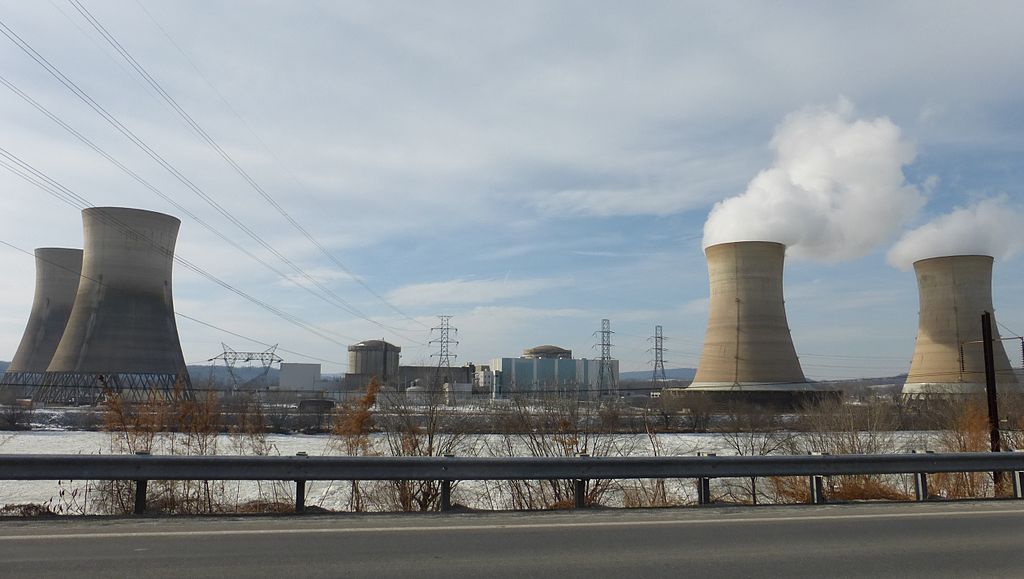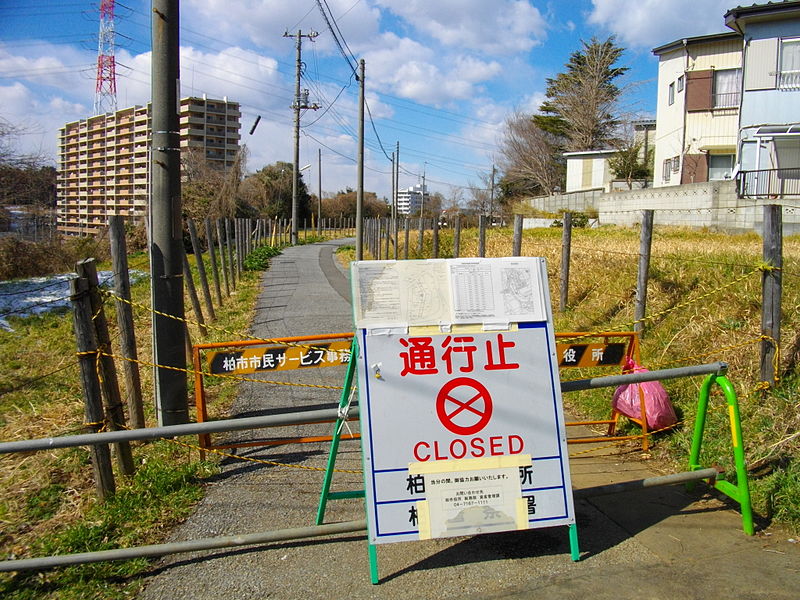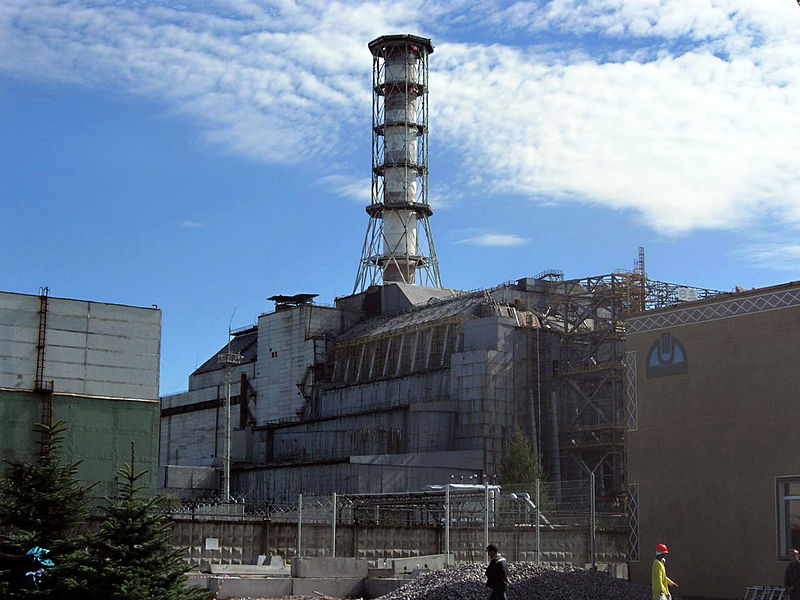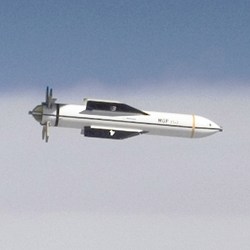Some Accident Scenarios
What if a DFR plant is hit by accidents similar to Fukushima or Chernobyl? In this section, some hypothetical events of this kind shall be explored.
Three Mile Island: Loss of secondary Cooling

On March 28 in 1979 all pumps of the secondary cooling loop of reactor TMI-2 stopped due to water, which had escaped after the attempt to clean a filter, damaging a sensor. The temperature rise in the core triggered reactor scram, but the decay products still generated heat. An overpressure valve on top of the pressure vessel opened — and could not be closed again due to mechanical malfunction. Cooling water escaped, the reactor overheated and was in part destroyed. There were no critical releases of radiotoxicity.
If a DFR is cut off from heat extraction via steam loop, the thermostat effect reduces fission rate to zero almost immediately. Decay heat production in the core is low (the fission products get filtered out continually); if nominal temperature is still exceeded, the fuse plugs melt, draining the liquid into storage tanks.
Fukushima: Failure of Primary Cooling Loop
On March 11 in 2011, the pressurized water reactors of Fukushima Daiichi nuclear power plant were shut down due to the Tohoku earthquake. The tsunami which followed destroyed the diesel engines powering the cooling pumps. After batteries had been used up, the pumps could not be run any longer, the reactors overheated because of fission product decay — much like TMI-2. The heat dissociated water into oxyhydrogen, which, as hydrogen recombinators were absent, caused detonations inflicting heavy damage on the reactor buildings. Large amounts of radiotoxins were released.
Failure of the lead pumps will, like loss of heat sink, cause the DFR’s fission rate to plummet to zero. Afterwards, natural convection in the coolant suffices to remove decay heat. There is no water anywhere near the core, so steam or hydrogen explosion cannot occur.
Chernobyl
On April 26 in 1986, an experiment was undertaken on Unit 4 of the Chernobyl nuclear power plant to show whether the running down turbines could deliver sufficient power to the cooling pumps while the diesel engines started up, which needed a little less than a minute. Operator errors had left the reactor in unstable condition; when turbine power fell (reducing pumping velocity), this together with the RBMK reactor’s positive temperature and void coefficient caused a massive power excursion. Complete destruction of the reactor and large-scale release of radiotoxicity followed.
Among the three largest civilian nuclear power accidents, the Chernobyl scenario is least adaptable to the DFR. It neither has control rods, making the operator errors that put the RBMK in an unstable condition impossible, nor are large power excursions plausible in a self-stabilizing liquid-fueled reactor. Chernobyl has little in common with western light-water reactors, and even far less with the DFR.
Further Accident Scenarios
- PPU malfunction: Setting nominal temperature too high through fissile overdose.
The equilibrium temperature of the core is a function of the concentration of fissile nuclides in the fuel. If, due to internal error, the PPU increases this concentration too much, an increase in temperature would follow — triggering the melt plugs and draining the fuel into storage tanks. - Escape of fuel liquid. Through damage to the PPU or the interconnecting tubes, molten salt or actinide melt might escape from the loop. This is not a good situation and would demand complex decontamination of the affected rooms. A full-fledged disaster with radioactive release to the environment would not result, though. The concrete from which the plant’s underground bunker is built is mixed with boron, which serves as a neutron absorber and surpresses a chain reaction — which is unlikely anyway, as the liquid forms a shallow puddle from which neutrons escape readily without causing fissions.
- Breaking of fuel tubes in the core. This is a common question: What if lead and fuel mix unfortunately? The crew (or a suitable automaton) would scram the reactor immediately, by switching off the cooling plant for the melt plugs, draining the fuel into the storage tanks. Nonetheless, certain amounts of salt or actinide melt would certainly enter the lead loop, and accumulate on top (salt) or at the bottom (melt melt). There would also be no chain reaction outside of the reactor, as the liquid would spread into a geometry with large surface. The surrounding lead would form a very powerful radiation absorber. Similar to the previous item, complex decontamination would be in order, but there would be no radioactive release to the environment.
- Utter destruction of the reactor. In case the DFR — for whatever reason — gets completely shattered, lead, fuel and broken structural materials would form a half molten, half solid radioactive rubble pile at the bottom of the reactor room which would be extremely bothersome to clean up. One would first have to wait for it to cool down and the radiation decline, then the mixture could be cut out by robots or remote effectors. An expensive total loss! Even here, though, the only problem outside of the reactor building would be financial troubles for the company. The absence of flammable substances (such as graphite) or high-pressure media (water) presence an enormous safety advantage over the kinds of power reactors that are common today.
- Military attack. To crack the reactor bunker and hurl out the radioactive inventory, the attacking army would have to first fire a heavy penetrator projectile and afterwards a high-explosive bomb (e.g. fuel-air-explosives or nuclear bunker busters). Why a commander would attempt to contaminate an area he intends to occupy with his own troops remains an open question. (Terrorists are not able to get their hands on such arms.) One thing is sure: A nation entangled in such a ruthlessly conducted war has greater worries than a certain area being inaccessible until thorough decontamination. Incidentally, reduction of the dependence on fossil fuels also lowers the chance of war, much like economical seawater desalination powered by DFRs neutralizes the threat of future water wars. All military conflicts after World War II either took place in underdevolped regions or were at least indirectly connected to the acquisition of mineral oil. This means that the DFR could become a powerful instrument of peace.
- Escape of volatile fission products from the containment. Fission gases released inside the reactor bunker — e.g. from the PPU — will be absorbed by the vent filters. The noble gases krypton and xenon will be able to pass the filters, but are radiobiologically unproblematic.


